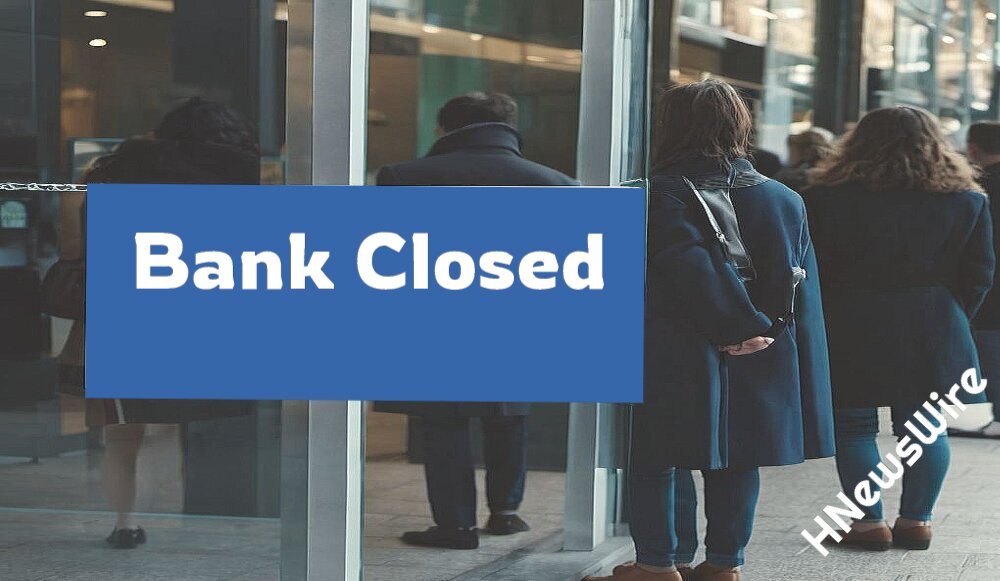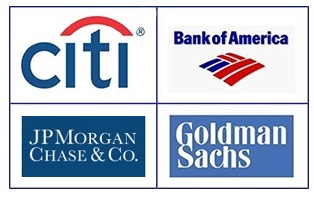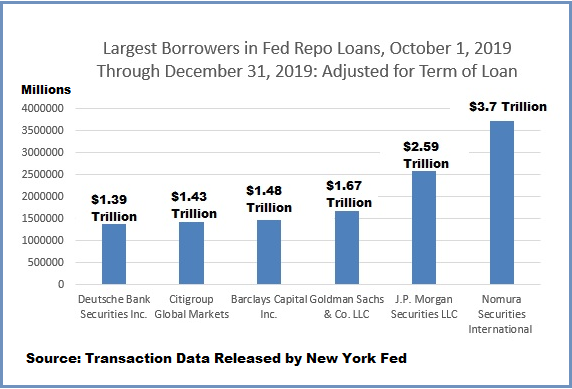
By Pam Martens and Russ Martens:
Last Thursday, 12 Democrats in the U.S. Senate sent a deeply insightful letter on a subject most Americans have never discussed around their kitchen table: adequate capital levels at the Wall Street mega banks that came close to bringing down the U.S. financial system in 2008. Before that financial crisis was over – the worst since the Great Depression of the 1930s – millions of hardworking Americans had lost their jobs and millions more had their homes taken in foreclosure.
If the U.S. is going to avoid a replay of that crisis, Americans are going to have to start having these critical conversations about the structure of Wall Street mega banks around the kitchen table. Americans are going to have to start engaging in the battle to shape the future of American democracy and more equitable wealth distribution, which requires dramatic reform of the mega banks on Wall Street.
The letter from Senate Democrats, including Senator Sherrod Brown, the Chair of the Senate Banking Committee, includes these two key passages:
“Capital is the linchpin of safety and soundness in our banking system. When a bank uses more capital to fund its investments and activities instead of debt, it is investors and shareholders, not workers and taxpayers, that take a hit if the bank faces challenges. Strong capital is the shock absorber on banks’ balance sheets during economic downturns. It allows banks to keep making loans exactly when businesses and households might need an economic lifeline the most…
“The small group of banks that the proposed rule covers are among the largest and most complex financial institutions in the world. Some are behemoths with trillions of dollars in assets. The institutions that would be affected the most focus on sales and trading activity that primarily serve Wall Street and other large institutions. Especially for these large and complex institutions, capital is what keeps risky bets at banks from transforming into layoffs, depleted savings, and fewer wealth-building opportunities for workers, small businesses, and communities. The proposal, when implemented, will increase capital requirements by 19% for the U.S. Global Systemically Important Banks (G-SIBs), which consist of only eight banks. For nearly all other large banks with over $100 billion in assets, capital requirements will increase by 6%. In aggregate, the proposal will increase capital requirements by 16% for all banks with more than $100 billion in assets, thereby impacting fewer than 50 banks that operate in the U.S.”
According to the Federal Deposit Insurance Corporation, as of September 30, 2023 there were 4,614 federally-insured commercial banks and savings institutions in the U.S. The proposed higher capital levels would impact less than 50 banks or less than one percent of the total federally-insured financial institutions in the U.S. But the lobbying, advertising and legal battle that these banking behemoths have waged today is reminiscent of the strong-arm tactics they used to defeat meaningful reform after they collapsed the U.S. financial system in 2008.
Think about these words:
“…the choice that America faces is stark: whether Washington will accede to the vested interests of an unbridled financial sector that runs up profits in good years and dumps its losses on taxpayers in lean years, or reform through stringent regulation the banking system as first and foremost an engine of economic growth. To restore health and balance to our economy, Johnson and Kwak make a radical yet feasible and focused proposal: reconfigure the mega-banks to be ‘small enough to fail.’ ”
The above words were written as promotional text for a book released just shy of 14 years ago: 13 Bankers: The Wall Street Takeover and the Next Financial Meltdown by Simon Johnson and James Kwak. Now think about this: Americans have made no headway on this critical subject over the span of 14 years. In fact, Americans have lost ground.
Secretly, from December 2007 through June of 2010, the Federal Reserve funneled over $16 trillion in cumulative loans at below-market interest rates to the mega banks on Wall Street and their foreign counterparts (many of which were counter parties to Wall Street’s derivatives) to keep them from collapsing.
The Federal Reserve fought a multi-year court battle to keep the names of the banks and the amounts they had borrowed a secret from the American people. When the details were finally revealed in 2011, there was major news coverage.
But as further evidence of just how much ground Americans have lost in this battle over the past 14 years, after the Fed had secretly pumped trillions of dollars into these same institutions to prop them up beginning on September 17, 2019 – in what is now called the repo loan crisis – there was a Kremlin-esque mainstream media news blackout when it came to naming the banks and the amounts they borrowed. (See There’s a News Blackout on the Fed’s Naming of the Banks that Got Its Emergency Repo Loans; Some Journalists Appear to Be Under Gag Orders.)
Another serious problem with today’s debate about capital levels is that it’s a band aide on a much bigger problem. Simon Johnson and James Kwak perfectly summed up the problem in a blog post the day after their 13 Bankers book was published in 2010:
“…there is the problem that capital requirements, like all complex calculations, can be gamed. Lehman Brothers, for example, was more than adequately capitalized on paper – Tier 1 capital of 11.6 percent – shortly before it went bankrupt in September 2008. Thanks to the literally voluminous report by the Lehman bankruptcy examiner, we now know this was in part due to aggressive and misleading accounting. More generally, rampant use of regulatory arbitrage – techniques to artificially increase bank capital ratios – was a factor in the failure of AIG (much of whose business was enabling European banks essentially to evade capital requirements) and the near-failure of Citigroup (which was almost capsized by the structured investment vehicles it created to evade capital requirements).”
For how we reported in November of 2008 on the meltdown of the giant Citigroup, see our report: The Rise and Fall of Citigroup.
And for anyone who thinks these Wall Street mega banks aren’t manipulating their capital levels today by holding exposure off their balance sheet, see our report: Three of the Biggest Banks on Wall Street Have $7.4 Trillion In Off-Balance Sheet Exposures.
The Fed wants to pretend that it has a bag of magic beans called stress tests that will catch any major problems at the mega banks before they implode the U.S. financial system as they did in 2008. But as far back as a decade ago, even the comedy writers at Saturday Night Live understood the farce of the stress tests.
For a more serious analysis of the Fed’s stress tests, see: Wall Street Watchdog Assails Fed’s Stress Tests of Mega Banks as “Toothless” – Provides a Wakeup Call to Biden Administration; and Bombshell Report: Fed Is Aware that Big Banks Are Rigging their Stress Tests and Letting Them Get Away with It; and Three Federal Studies Show Fed’s Stress Tests of Big Banks Are Just a Placebo.
In the May 2009 issue of The Atlantic Magazine, Simon Johnson talks about the financial oligarchy that has captured the U.S. government and bends its will to subservience to the Wall Street bankers. Johnson was completely spot on in 2009 and Economics Professor Gerald Epstein is completely spot on in the book he just released on Tuesday: Busting the Bankers’ Club: Finance for the Rest of Us.
The stunning thing about Simon Johnson’s accurate assessment in May of 2009 and Gerald Epstein’s assessment in January 2024 is how much ground the American people have lost in terms of meaningful reform of the Wall Street mega banks. Their concentration of assets has grown; their power in Washington has grown; and their ability to brazenly asset strip the pockets of Americans and break laws without criminal prosecution continues.
Americans can win this battle – as they have so many times in history – by engaging. To engage today, simply forward the link to this article to 10 family members or friends and plan your strategy for fighting back around the kitchen table tonight.


Treat your skin well. Our soaps are gentle and produce a smooth, creamy lather that is nourishing to your skin. They are handmade in small batches. We use only high-quality natural ingredients. No chemicals, no sodium laurel sulfate, no phthalates, no parabens, no detergents. GraniteRidgeSoapworks
![]()




